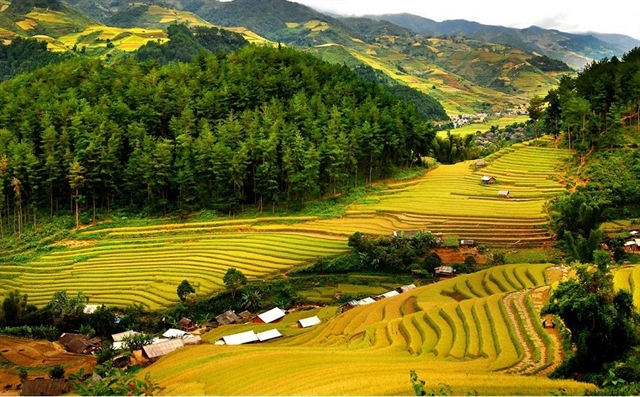.jpg) Society
Society


|
| A Ngọc Linh ginseng nursery in Kon Tum Province. — VNA/VNS Photo Cao Nguyên |
KON TUM — Kon Tum Province is expanding the cultivation of medicinal plants to increase farmers’ incomes.
The Tây Nguyên (Central Highlands) province has ideal conditions for growing medicinal plants, especially Ngọc Linh ginseng, which has been recognised as a ‘national treasure.’
Ngọc Linh ginseng, aka Vietnamese ginseng, is considered one of the most precious varieties globally for its ability to improve immunity, enhance liver function and lower cholesterol.
It has been granted geographical indication by the National Office of Intellectual Property.
The province has 1,749ha under the variety and 5,120ha under other medicinal plants, according to its People’s Committee.
They are grown mostly in Tu Mơ Rông, Đăl Glei and Kon Plông districts.
Tu Mơ Rông has the largest area under Ngọc Linh ginseng in the province, 1,680ha, or 96.5 per cent of the total.
Growing ginseng and other medicinal plants has helped improve the lives of locals.
A Hải of Tu Mơ Rông’s Tê Xăng Commune grows and trades Ngọc Linh ginseng and medicinal plant sâm dây (Codonopsis javanica).
He earned more than VNĐ1 billion (US$43,000) last year, he said.
With encouragement and guidance from local authorities, he uses proper tending techniques, and so they grow well and offer high incomes, he said.
“I will expand the area under Ngọc Linh ginseng.”
Võ Trung Mạnh, chairman of the Tu Mơ Rông District People’s Committee, said the district could grow 10,000ha of Ngọc Linh ginseng and hundreds of thousands of hectares of other medicinal plants.
His administration would encourage especially ethnic people to grow them, he said.
In 2020-22, the district saw 1,947 poor households escape poverty, with the cultivation of Ngọc Linh ginseng playing an important role in it, he said.
It has called on companies and co-operatives to invest in Ngọc Linh ginseng, he said.
Many local farmers have linked up with companies to grow the ginseng and managed to improve their income, he added.
A Sỹ, secretary of the Măng Ri Commune Party Committee, said: “The lives of my family and local people have improved significantly thanks to growing Ngọc Linh ginseng.”
The district has 14 co-operatives that grow medicinal plants, trade them or produce medicinal products.
The Tu Mơ Rông Agriculture and Medicinal Plant Co-operative in Đăk Na Commune sold 15.3 tonnes of ginger, turmeric, lime and garlic to a company that produces and exports goods to the EU last year.
Hà Văn Phương, director of the co-operative, said: “We will expand the growing areas to supply more inputs for producing exports.”
Targets
The province People’s Committee plans to increase the area under Ngọc Linh ginseng to 4,500ha and under other medicinal plants to 10,000ha by 2025.
The province aims to have at least one establishment able to produce 1-2 million seedlings of medicinal plants a year in each district and city.
It plans to have 25,000ha of medicinal plants, including 10,000ha of Ngọc Linh ginseng, by 2030.
It targets harvesting 130,000 tonnes of medicinal plants by then and having medicinal plants account for 15 per cent of agricultural value.
It will invest in infrastructure and logistics services for growing medicinal plants.
It will develop concentrated medicinal plant growing areas and processing plants.
The province plans to allocate more than 102,000ha of forestry lands to households and businesses for exploitation but also protection, 10,000ha for Ngọc Linh ginseng.
It will also develop four zones to grow, research and develop medicinal plants in Tu Mơ Rông, Đăl Glei and Kon Plông districts.
It has attracted 31 projects with investments in growing medicinal plants on a total of 13,900ha and producing medicinal products.
Kon Tum has 853 kinds of plants and mushrooms that have medicinal use, according to its People’s Committee, with 30 of them being used commonly to treat diseases. — VNS


.jpg)

